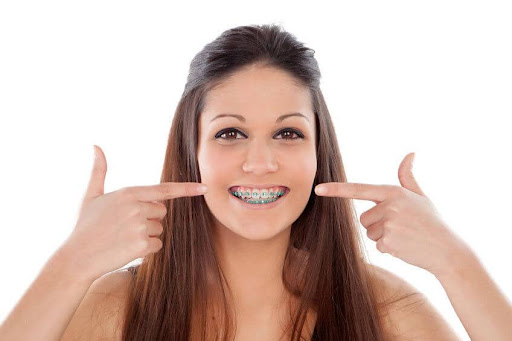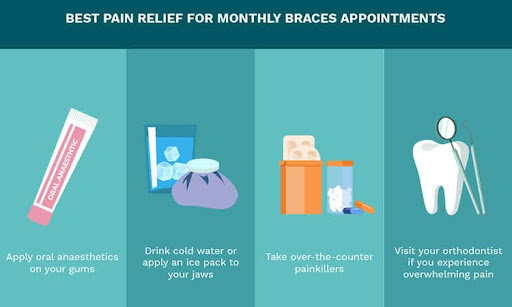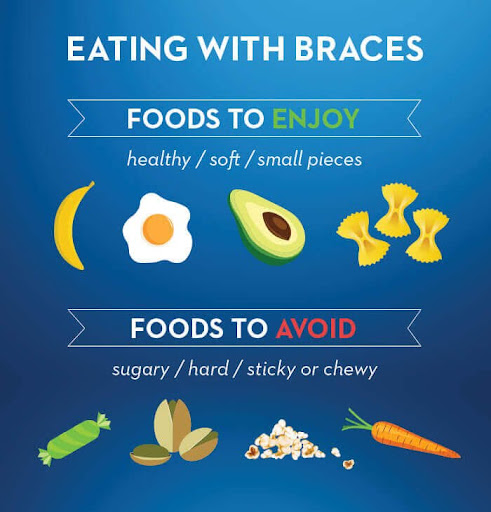
Congratulations! You have invested in yourself by getting braces. Your goals are straight teeth and a smile that increases your self-confidence for today and into your future.
Many people think braces are painful, but you can plan for the times when you are likely to have some discomfort adjusting to the new appliance or adjustment. Depending on the type of braces, your orthodontist will periodically tighten the wires, so your teeth, gums, lips, and tongue will have to get used to the increased pressure. If you use clear aligners, like Invisalign, there may be temporary pressure each time you change aligners. In either case, any pain only lasts for a day or two.
In this article, you will learn about the pain associated with orthodontic treatment and how to alleviate discomfort from braces. These tips are efficient, so there is no need to delay getting the vibrant smile you have always wanted.
Normal Braces Discomfort or Pain That You May Experience
Braces pressure your teeth to move gradually according to a prescribed treatment plan. You will visit your orthodontist every few weeks, and they will tighten the wires on your braces. Each time this happens, the soft tissues in your mouth will need time to get used to the increased tension.
You may experience:
- Pressure on the teeth
- Swollen or inflamed gums
- Irritated cheeks, lips, and gums
- Jaw tension
- Headaches
- Sensitivity to heat or cold
- Lightly bleeding gums
- Difficulty chewing food
- A slight feeling of loose teeth
These examples are normal responses to braces, especially when they are first put on your teeth and each time the braces are adjusted. The discomfort only lasts a day or so. If it continues longer than that, call your orthodontist and ask for assistance.
10 Tips on How To Deal With Discomfort From Braces

Now that you know more about mild pain or discomfort caused by braces, you can proactively deal with it. Here are some tips that will give you relief:
Take Over-the-Counter Pain Relief Ahead of Time
Since you know you might feel pain or discomfort each time your orthodontist tightens the wires, take some OTC pain reliever an hour before your orthodontic appointment. You won’t experience as much pain after your appointment.
Use Oral Anesthetics
Another suggestion for pain relief is an oral anesthetic like Anbesol or Orajel. You rub it directly on the sensitive teeth and gums with a cotton ball or finger. The anesthetics desensitize the teeth and gums as they shift so you don’t feel pain or discomfort.
Have an Ice Pack Available
It’s always easy to have an ice pack in your freezer. Place the pack outside the mouth and put a cloth between your skin and the ice pack. Using cold temperatures can reduce inflammation, but be careful. Don’t apply ice for 15 to 20 minutes; don’t fall asleep with the ice on your skin. Ice can harm the skin and result in frostbite.
Sip on Ice Water
Sipping ice water can help, too. The cold water will numb the tissues in your mouth and relieve the pain and discomfort.
Give Your Gums a Massage
If your gums are sore or swollen, try massaging them. Gently rub the gums in a circular motion with your finger. You rubbed your gums with ice before the massage became even more effective. Continue as often as you wish until the swelling has gone down.
Use Orthodontic Wax to Form a Barrier
Also called dental wax or braces wax, your orthodontist will give you some before leaving their office. The wax is designed to protect the inside of your mouth from the brackets on the braces, especially if a wire comes loose and pokes your mouth.
You use a tiny, pea-size piece of wax and mold it over the part of the braces, causing you pain. The goal is to create a barrier between the metal or plastic and any irritated soft tissue. The wax is nontoxic, so it is harmless if you swallow some. Change it twice a day and after brushing your teeth.
Eat Soft Foods
Avoid crunchy foods right after having the braces put on and when they are adjusted. Eat soft foods, like soups, cooked cereals, mashed potatoes, and ice cream. This is true even if you use Invisalign clear aligners, too. The aligners also pressure your gums each time they are changed, so stick to soft foods.

Use a Warm Rinse and Hot Tea
Rinsing and gargling with warm salt water is also therapeutic for tooth pain and sores or cuts in your mouth. Use 8 ounces of warm water and one teaspoon of salt. If your mouth is tender and the saltwater stings, decrease the salt to 1/2 teaspoon for the first 1 to 2 days. Heat the water, remove it from heat, add salt, and stir.
You can also drink peppermint tea and place the used tea bags on the irritated area. Do this when the bags are hot and damp. Add peppermint essential oil to the tea bag to improve it and relieve pain.
Good Dental Hygiene
The better you care for your teeth, the less pain and discomfort you can experience. Proper brushing and flossing regularly ward off tooth decay and gum disease. Increased pressure in your mouth from the braces or aligners won’t cause as much irritation if your gums and teeth are healthy.
Be Patient
Don’t lose sight of why you are wearing braces. The temporary pain or discomfort in your mouth will be worth it in the long run. Just be patient!
Consider Us Part of Your Braces Team!

Minor braces discomfort is a small price for a lifetime with permanently straight teeth and a winning smile! By understanding when the pain and discomfort might be bothersome and then proactively following some of the tips outlined in this article, you can plan to help make yourself more comfortable.
Here at Top NoVa Orthodontics, we are known for providing effective orthodontic treatments, including braces, in a comfortable and friendly environment. We value our relationships with our clients and stand ready to be part of your orthodontic team, aiming to make the process as easy and tolerable as possible. Contact us today with any questions you may have. We are here to help!


